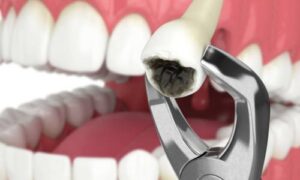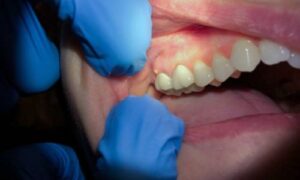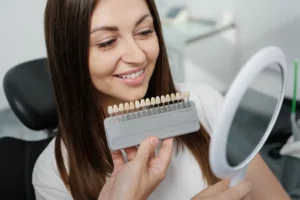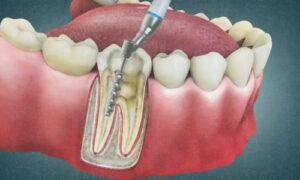Introduction: Do Braces Take Longer Than Invisalign
In this article, we will explore the factors influencing the treatment duration of braces and Invisalign, helping you decide on the best orthodontic approach for your needs. Regarding orthodontic treatment, the duration is a common concern for individuals seeking a straighter smile. Traditional braces and Invisalign are two popular options with unique advantages. Braces typically require a longer treatment duration, averaging about 18-24 months, due to the gradual shifting of teeth using metal brackets and wires. In contrast, Invisalign treatment duration can range from 6-18 months, as the clear aligners are changed every few weeks to move teeth into their desired position gradually.
Do Braces Take Longer Than Invisalign
Braces:
Braces have been a staple in orthodontic treatment for decades. They utilize metal brackets and wires to gradually shift teeth into the desired position. The treatment duration with braces can vary based on several factors.
Complexity of the Case:
The severity of the orthodontic issues plays a significant role. More complex cases may require a longer treatment period with braces.
Adjustment Appointments:
Regular adjustment appointments are necessary with braces to tighten the wires and make essential modifications. These appointments typically occur every 4-6 weeks.
Compliance:
Patient compliance, including proper oral hygiene and adherence to dietary restrictions, can impact the overall treatment duration.
Invisalign:
Invisalign offers a more discreet alternative to traditional braces. It uses a series of clear aligners to move teeth gradually. Various factors influence the duration of treatment with Invisalign.
Treatment Complexity:
Invisalign is suitable for a wide range of orthodontic issues, but the complexity of the case can affect the duration of treatment.
Adherence to Wear Guidelines:
Invisalign aligners should be worn for 20-22 hours daily for optimal results. Strict adherence to wear guidelines contributes to the efficiency of the treatment.
Switching Aligners:
Invisalign treatment involves changing aligners approximately every 1-2 weeks. Consistently progressing through the aligner series is crucial for achieving the desired results on time.
Comparison And Considerations
1. Treatment Approach: Do Braces Take Longer Than Invisalign
Braces:
- Components: Traditional braces consist of metal brackets attached to the teeth and connected by wires, gradually moving teeth into the desired position.
- Adjustments: Regular adjustment appointments every 4-6 weeks are needed to tighten wires and modify the treatment plan.
Invisalign:
- Aligners: Clear, custom-made aligners fit snugly over the teeth, with each set designed to move teeth incrementally every 1-2 weeks.
- No Adjustments: Invisalign eliminates the need for frequent adjustment appointments, as treatment progression is pre-planned with multiple sets of aligners.
2. Visibility and Aesthetics:
Braces:
- Visibility: Noticeable due to metal brackets and wires, making them a more conspicuous option.
- Colour Options: Individuals can choose coloured bands for a personalized touch.
Invisalign:
- Invisibility: Nearly invisible, providing a discreet option for orthodontic treatment.
- Transparent Design: Clear appearance makes Invisalign aligners appealing for a less noticeable treatment.
3. Comfort:
Braces:
- Initial Discomfort: Patients may experience discomfort, especially after adjustments, as teeth begin to shift.
- Soft Tissue Irritation: Brackets and wires can irritate the soft tissues inside the mouth.
Invisalign:
- Smooth Edges: Smooth and edgeless aligners offer a generally more comfortable experience.
- No Wires or Brackets: The absence of metal components eliminates the potential for soft tissue irritation.
4. Oral Hygiene:
Braces:
- Challenges: Cleaning around brackets and wires can be challenging, requiring additional effort for optimal oral hygiene.
- Special Tools: Floss threaders and interdental brushes may be needed to reach between wires and around brackets.
Invisalign:
- Removability: Aligners are removable, allowing easy brushing and flossing without obstacles.
- No Dietary Restrictions: Since aligners are removed for meals, there are no restrictions on what can be eaten during treatment.
5. Treatment Duration: Do Braces Take Longer Than Invisalign
Braces:
- Varied Duration: Treatment duration can range from 18 months to several years, depending on case complexity and patient compliance.
Invisalign:
- Typical Duration: Treatment often takes a similar amount of time as braces, ranging from 12 to 24 months, depending on various factors.
6. Cost Considerations:
Braces:
- Cost Range: Generally considered more budget-friendly compared to Invisalign.
Invisalign:
- Higher Cost: Reflects the advanced technology and discreet nature of the aligners.
Conclusion: Do Braces Take Longer Than Invisalign
The duration of orthodontic treatment varies for braces and Invisalign, with factors like case complexity, patient compliance, and treatment approach influencing the timeline. Choosing between braces and Invisalign should consider the treatment duration and factors like visibility, comfort, and oral hygiene. Consulting with an orthodontic professional will help determine the most suitable option based on individual needs and preferences.
FAQs about Do Braces Take Longer Than Invisalign:
Q: How long does orthodontic treatment typically take with braces?
A: The duration of orthodontic treatment with braces can vary based on factors such as the complexity of the case, regular adjustment appointments, and patient compliance. On average, treatment with braces may range from several months to a few years.
Q: Is the treatment duration with Invisalign shorter than that of braces?
A: The treatment duration with Invisalign can be comparable to braces and is influenced by factors like the complexity of the case, adherence to wear guidelines, and the efficiency of switching aligners. In some cases, Invisalign may offer a more efficient treatment timeline.
Q: How often do adjustment appointments occur with braces?
A: Braces adjustment appointments typically occur every 4-6 weeks. During these appointments, the orthodontist tightens the wires and makes necessary adjustments to progress the treatment.
Q: What factors influence the duration of Invisalign treatment?
A: The duration of Invisalign treatment is influenced by the complexity of the case, adherence to wear guidelines (20-22 hours a day), and the efficiency of switching aligners, which usually happens every 1-2 weeks.
Q: Are Invisalign aligners comfortable to wear?
A: Invisalign aligners are generally more comfortable than braces because they lack sharp metal components. However, some individuals may experience initial discomfort or pressure when switching to a new set of aligners.
Q: Which option is more discreet – braces or Invisalign?
A: Invisalign aligners are virtually invisible, offering a discreet option for those concerned about the visibility of orthodontic treatment. Braces, with their metal brackets and wires, are more noticeable.
Q: How does patient compliance affect the duration of treatment with Invisalign?
A: Adherence to wear guidelines is crucial for the success and efficiency of Invisalign treatment. Consistently wearing aligners for 20-22 hours daily, as recommended, contributes to achieving the desired results within the expected timeframe.
Q: Can I maintain good oral hygiene with both braces and Invisalign?
A: While maintaining good oral hygiene is possible with braces and Invisalign, Invisalign aligners are removable, making it easier to brush and floss without brackets and wires. Proper oral hygiene practices are essential for the success of orthodontic treatment.



























